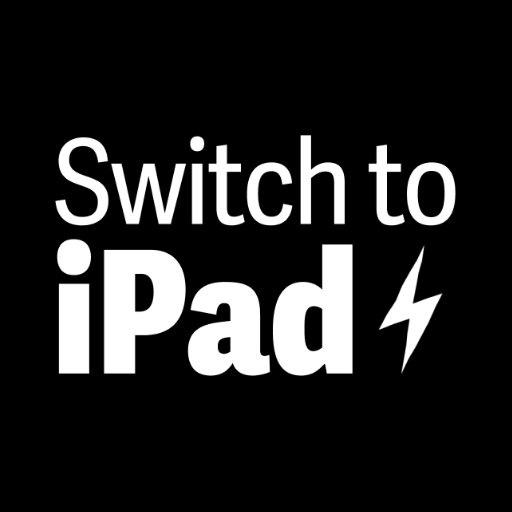🆓 This member post is free for all, thanks to our paying subscribers. Enjoy!
Hi!
My name is Thord D. Hedengren, and I’m not typing this letter, titled Switch to iPad, on my iPad for once. There’s a reason for that. I had to set up a (big) non-Thunderbolt 4K screen at my desk because of, well, reasons. That means that the screen covers my wall-mounted iPad holder that you might remember from my ergonomics piece. This is temporary, but it makes the iPad less ideal for typing at my desk at the moment.
This temporary setup got me thinking about how hard it can be not to revert to what you know. Because of it, I’ve done some things on my M1 Mac mini, which is great in every conceivable way except that it isn’t the device I’d like to use, that I would usually do on my iPad. It comes naturally because I’ve used Macs for such a long time, and it works. I don’t want to say it ”just works” because some things has required me to jump through hoops to find out an adequate Mac solution for an iPad task, which I found an interesting change of pace.
Other things are easier on my Mac. That will always be the case. Unless you change your entire behavior and embrace alternative ways of doing things, the Mac will always stack up, and possibly exceed your iPad experience. The lines are more blurry that ever, thanks to the keyboard and pointer support in iPadOS, and a 12.9” iPad Pro sitting in a Magic Keyboard is just as much a laptop as your brand new MacBook Air.
The difference is in the software — apps — we use, and what they’re made for. Running an iPad app on macOS is possible now, if you have an Apple Silicon powered Mac and Big Sur, but the experience isn’t enjoyable overall, and that’s not just down to how Apple decided to implement the feature.
On an iPad, you interact one way, and on a Mac, you interact in another. It translates better than ever for apps that rely heavily on pointer support, but it’s still a jarring experience. It’s not only that though, it’s the expectation of how said interaction will work and feel.
Back to the Mac. I found that, while some habits and use-cases were now surely iPad-centric, it was easy enough to get into the macOS way of doing things again. It was easy actually, which made me recall how I struggled — oh, how I struggled! — to move from the Mac, to the iPad, for the majority of tasks all those years ago. This was before iPadOS was a thing, before pointer support and Magic Keyboards (but with bluetooth keyboard, luckily). The struggle was, as they say, real. I was determined, however, and luckily, my days consisted mostly light image processing and writing (of all sorts) at the time, so the switch wasn’t too bad. It’d be a lot easier today, iPadOS has come such a long way, but it was easy enough. Many things I ran into weren’t as good on the iPad back then, and that’s true for some cases now as well.
Take light image processing, just cropping, resizing, and exporting from a high-resolution image, to one more suited for web use. On my Mac, that’s a simple job in Pixelmator Pro, using familiar toolbars and the like. Desktop apps like these has changed very little the past decade or more, they’re still more or less Photoshop-likes, although more user-friendly, of course.
I use Pixelmator Photo for this on my iPad. It gets the job done well enough, and I’ve grown accustomed to the workflow, but it’s new. It shares very little, if anything, with how a typical image processing app would do these things. There’s no Photoshop-like part of Pixelmator Photo, it’s its interface entirely, and not necessarily a completely logical one, at least not if you expect things to be as they’ve always had.
This situation, where you try to do something on your iPad that you’ve done a thousand times on your Mac or PC, but it stumps you, it stops you in your tracks because you don’t understand how it works, it doesn’t look like it always has, that’s when you risk going back. This is when you really have to stop yourself, to figure out what your alternatives are on the iPad, and then evaluate. Is it better or worse than it was?
Take all those things that are better, and the ones that are worse, and stack them against each other. Truly evaluate them and what they mean, just because something is hard the first time doesn’t mean it will be the second, fifth, or twentieth time.
I resize, crop, and compress a lot of images. I’m just as fast on my iPad as I am on the Mac, despite the two Pixelmator apps having two completely different design paradigms.
I used to touch up a lot of photos. The combination of Pixelmator Photo, Darkroom, and the Apple Pencil is faster than anything I’ve ever managed on a traditional desktop computer, with or without a Wacom board.
It goes both ways, is what I’m saying. And your expectations, how you’re used to doing things, your habit of doing things, is what you need to question, maybe even challenge.
The switch has got be worth it, of course. It probably isn’t for everyone, or at least not for every situation. I still have work things that I can’t do on an iPad at all. They’re a dwindling number, but sometimes you’re stuck with services, tools, or workflows that can’t be changed, because you’re not allowed, or the solution just adds too much friction. That’ll change in the end. As long as your computing experience is better than it was, and you’re finding new things that broaden your options, you know you’ve made the right choice.
I’ve since dug out an HDMI adapter, and can finally punch out words on the iPad again, connected to the screen. I’m glad this setup is temporary, and I can’t wait to get my proper writing setup back again. Making the effort to further fine-tune my iPad usage is worth a lot to me, because even though I have pretty stellar computers (M1 Mac minis and a ridiculous gaming laptop), I prefer the iPad most of the time. Having something as trivial as a screen and outside work-related needs force me to compromise my workspace is a minor bump in the road, nothing more.
It’s worth keeping the habit, and believing in the philosophy behind it.
In the wild…


